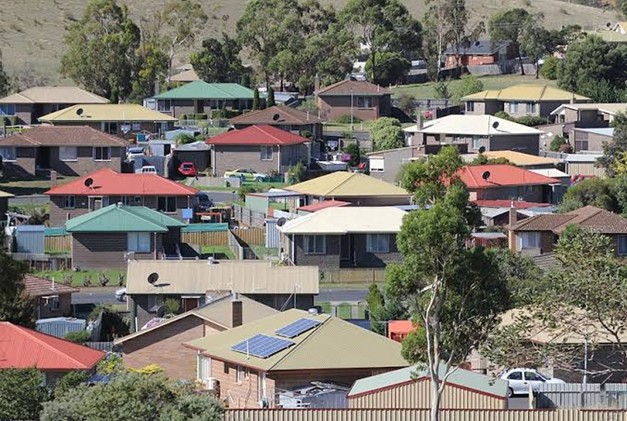The situation in Australia regarding the small house for the elder population is becoming more and more severe. This has resulted in a significant obstacle for the retirees who want to switch to smaller homes. The market is increasingly being characterized by the rise of property prices and the presence of large houses. In this environment, the elderly are having a hard time finding suitable accommodation that meets their financial as well as lifestyle requirements.
Why Are Downsizers Struggling To Find Homes?
The latest housing market report reveals a critical disparity in the housing supply of Australia. Over three-quarters of the homes in Australia have three or more bedrooms, while only 18 per cent are two-bedroom flats, representing just a small portion of the total. Moreover, 61 percent of the homes are occupied by one or two persons, pointing out the clear divergence of housing supply from population needs.
In the case of builders, the larger houses come first as a means of making more money. Many developers consider making small, affordable houses as not bringing in any money at all. Furthermore, the local authorities and the residents are the ones who usually oppose the building of small apartments with medium density, as they are afraid that it could affect the character of the neighbourhood negatively or that the property values could go down.
The opposition has left the elderly population of Australia living in homes that do not suit their needs. In some parts of the outback like Lesmurdie in WA, there was only one unit sold out of a total of 113 home sales in a year, which is a clear indication of the great demand for small houses.

Australia’s elderly face housing crisis as rising prices limit smaller home options
What Financial Barriers Make Downsizing Harder?
The financial system is one of those factors that adds to the discouragement of downsizing homes and is a nationwide practice in Australia. The situation where seniors sell their family houses usually involves a stamp duty tax applied to the subsequent property they buy. Moreover, still, the remaining sale proceeds are included in the pension assets test which consequently leads to a decrease in pension payments.
Therefore, the majority of older Australians are in the situation of being “asset rich but cash poor.” They have properties that are worth a lot but at the same time, they do not have enough money to cover their daily expenses or to move into a retirement home.
Not to mention the financial-costs, there are also the issues of relocation costs, real estate commissions, and emotional bonds to old family homes, all contributing to an individual’s reluctance to move. For most people, the money and time they have to spend when moving are not worth the perks of the new place.
Can Planning Early Improve The Situation?
According to experts, if you plan ahead of time, there will be a difference in the outcome. It is more likely that older Australians who start looking for smaller homes before they need to move will actually find one that fits their needs. Besides, early planning will avoid the tension of having to decide in a hurry when health or mobility becomes an issue.
Nonetheless, the planning cannot fix the problem of a shortage of housing that is already structurally caused. The lack of small houses for older Australians means that even those retirees who are well-prepared may still find themselves with very few choices.

Experts advise early planning to help older Australians secure suitable smaller homes
How Does This Connect To The Retirement Homes Shortage?
Australia’s retirement homes problem gets worse because of the shortage. Whenever older people cannot find smaller private houses, they mostly go to aged-care or retirement facilities. However, in quite a few areas, demand for such facilities is already much greater than supply.
The two shortages put a lot of strain on the housing system in general. The older homeowners who live in big houses cannot relocate, and this restricts the number of bigger homes available for younger families who are looking for such homes. The cycle goes on, and both generations suffer the consequences.
What Solutions Could Ease The Crisis?
The best way to improve housing supply in different forms and types. Zoning laws for the regions that have already been built upon could be updated so that more duplexes, townhouses, and medium-density housing are allowed in those areas.
Another possibility is that financial incentives would support such a move. Reducing or totally eliminating stamp duty for those who downsize would bring about the much-needed movement in the housing market. In addition, changing the pension asset tests would stop retirees from being punished for selling their properties.
Developers also have a part to play by offering small, accessible housing units along with large buildings. The community will need to change its thinking about this issue also, admitting that high-density housing can be compatible with the character of the neighborhood.
Governments, planners, and developers will have to work together to close the gap. The absence of such a collaboration could lead to older Australians being totally excluded from the housing market.
Also Read: First Home Buyer Scheme Transforms in Australia with Major Expansion
FAQs
Q1: What qualifies as small housing in this case?
A: Usually, a small house is considered to be a one or two-bedroom dwelling suitable for single or couple occupancy.
Q2: Why do builders not give priority to the construction of smaller homes?
A: Large houses represent bigger profits, thus small housing development is not an attractive option for most builders.
Q3: What is the impact of downsizing on pension rights?
A: The amount from a house sale could be included in the estate test for pension purposes, thereby possibly leading to a decrease in payments.
Q4: What are the government’s options?
A: The government could implement policy changes such as waiving stamp duties and relaxing zoning regulations to facilitate downsizing and increase housing supply.












